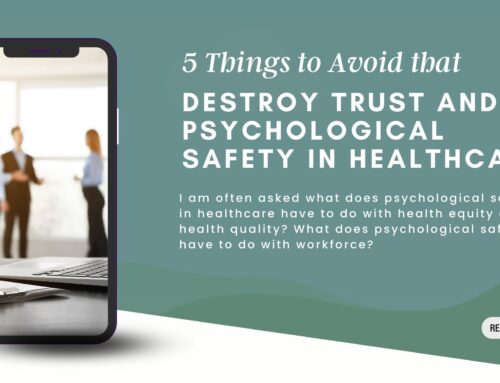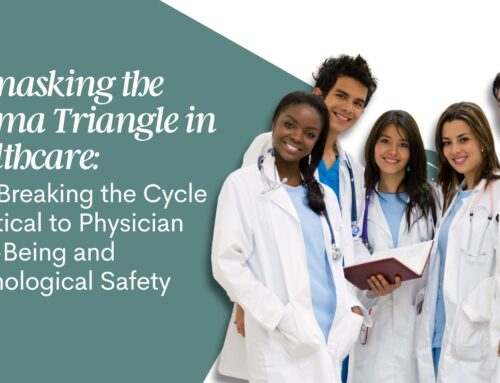
The Importance of Psychological Safety in Healthcare
Healthcare workplace culture fosters trust, reduces burnout, and enhances patient care. However, working in an unsafe environment affects their performance. Psychological safety allows people to feel heard, valued, and free to express themselves without fear. Without it, morale declines, and patient care suffers.
“What destroys trust is when a hospital says ‘we value you’ and then in the same breath asks you to justify your worth by doing additional work unpaid” ~ Dr. A
Timothy Clark’s book, The 4 Stages of Psychological Safety, highlights four key elements:
- Safety to Be Included
- Safety to Learn (and Make Mistakes)
- Safety to Contribute
- Safety to Challenge (or Report Issues)
This article explores three harmful behaviors that undermine psychological safety and offers solutions to restore trust in healthcare.
Bullying and Harassment: A Direct Threat to Psychological Safety in Healthcare
“During my surgery rotation, I saw the Chief of Surgery belittle residents repeatedly. Later, I noticed OBGYN attendings doing the same. It seemed like normal behavior.”
Bullying and harassment—verbal, physical, or online—create a toxic workplace. These behaviors strip confidence and silence employees, violating the “safety to challenge” element. In severe cases, they also threaten inclusion and learning.
Solution: Leaders must implement anti-bullying policies and take complaints seriously. An unbiased investigation process ensures fair treatment. Employees must trust that concerns will be addressed, not dismissed. Organizations often uncover more incidents than expected when they take this issue seriously.
Micromanagement: A Sign of Mistrust
“Leadership hired me but constantly looks over my shoulder, doubting my abilities. It makes me hypervigilant all day.”
Micromanagement creates anxiety and discourages independent thinking. Excessive oversight signals a lack of trust, violating the “safety to learn” and “safety to contribute” principles. Employees hesitate to share ideas, fearing constant correction. While not always malicious, micromanagement often stems from fear or a need for control.
Solution: Organizations must identify the root cause of micromanagement. If it stems from perceived distrust, leaders may need coaching. If an employee’s performance causes it, management should assess their role and training needs. Trust and professional development reduce micromanagement and empower employees.
Betrayal and Lack of Transparency: Eroding Trust from the Top
“Our leadership lied to the entire department and got caught. Transparency is vital. Without it, negativity spreads from the top.”
Trust is the foundation of psychological safety. When leaders deceive, break promises, or fail to communicate honestly, trust erodes. Gossip and secrecy create a toxic culture, making employees feel unsafe and undervalued. Once broken, trust is hard to regain.
Solution: Building trust requires integrity, transparency, and accountability. Leaders must model these values in communication, behavior, and policies. When trust is damaged, acknowledging mistakes and creating a repair plan make a difference. Although rebuilding trust takes time, consistent efforts restore a safe and supportive workplace.
Moving Forward: Creating a Culture of Trust and Safety
Recognizing harmful behaviors is the first step toward change. Leaders must assess workplace culture and make necessary adjustments. Addressing bullying, micromanagement, and dishonesty fosters an environment where healthcare workers feel safe and valued. When they do, they can provide the best care for their patients.
Stay tuned for part 3!
Create Psychological Safety in your organization. When you leave your employees feeling seen, heard, understood, valued, appreciated, and respected they will stay and make your organization their career home. Want to know more? Contact Dr. Clairborne to discuss her offerings and how she can help our leaders increase trust, safety and belonging in your organization. Learn more: https://www.mindremappingacademy.com/corporate-programs










